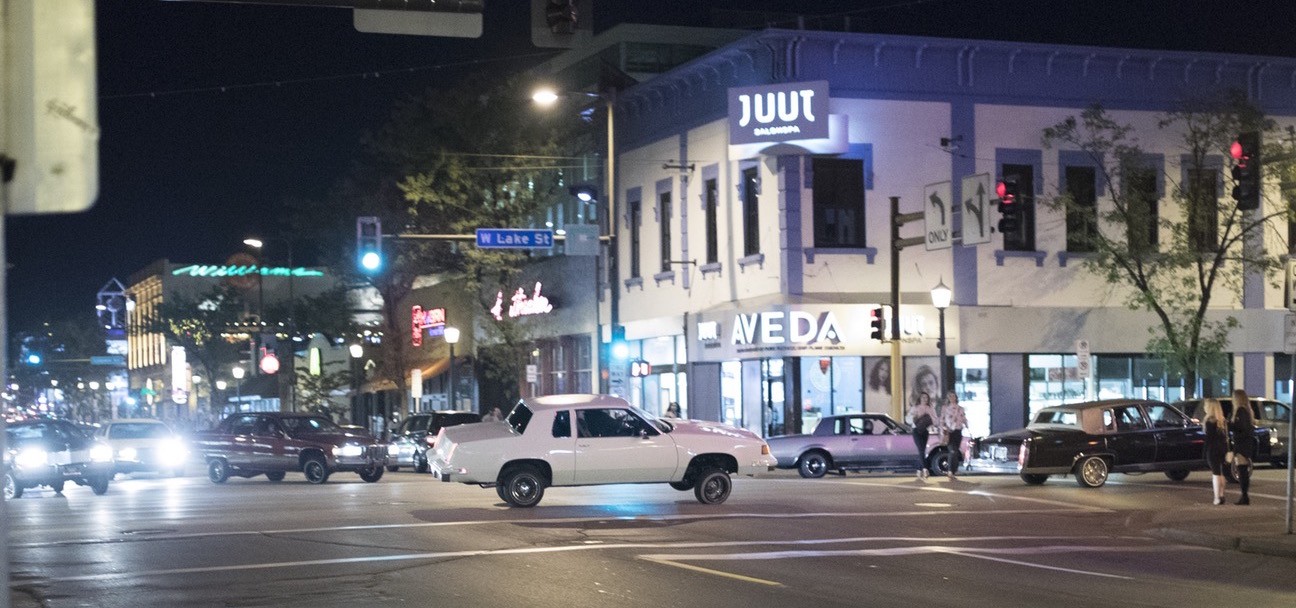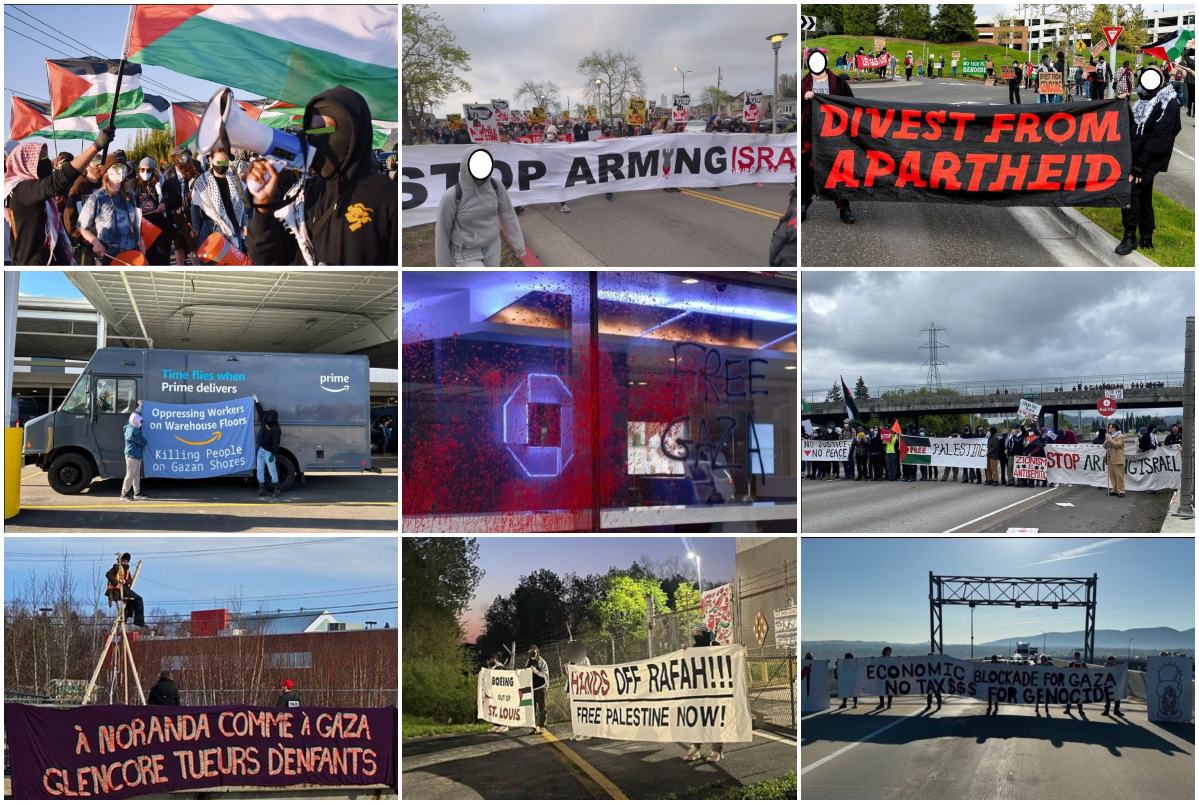Filed under: Uncategorized

Note: The article was hastily written a while back but the narrative and ideas presented still feel as pertinent as ever.
We have some ideas, but first, a little back story. Following the election, we knew like so many others that a violent storm was coming. We more or less all come from that thing that could be called “activism,” but all feel very alienated and distanced from that world now. We all wanted to do something, we just weren’t confident that more marches and rallies were going to the thing to stop a travel ban or the uptick in racist attacks. Meeting people who are unhappy and like-minded is the first step to making concrete plans. Our problem was that marches are really fucking boring when you just march along the parade route. Plus you can barely hear anyone (and thus can’t have a conversation) over the “Love trumps hate!” chants. It’s simply a bad place to meet people with whom you’d like to do anything other than attend other demonstrations. So when people started making plans to protest inauguration day, we wanted to work to create some space to congregate, talk, and dance. We wanted to see what would happen if we called for an anti-Trump dance party on January 19th in Uptown. We were going to blast music and hand out fireworks and encourage rowdy—but relatively low-risk—behavior and hopefully meet up afterwards at a bar to talk about where to go next. Although some questioned the purpose of such an event, it’s objectively true that had we been able to block a single street in Uptown for an hour without a permit, we would have been “resisting” more than any of the massive, but permitted and planned, marches that took place in the following days. We had no illusions about our capacities though, and did not imagine that this small action would significantly disturb the function of the city. Our goal from the beginning was to open up a space for meeting people, specifically people who were afraid, angry, and confused by the trump presidency and wanted to meet others who hated trump but who didn’t believe in activism, whether because they found it pointless or because it didn’t feel empowering in the way some would hope.
But that didn’t happen. Instead, we walked into what must have been an exciting counter-insurgency fantasy for the Minneapolis Police Department. When we saw all the cops, we moved into a parking lot to get out of sight, but were followed by an undercover sliming around behind us who peaked around the corner and gleefully ran back to report to his team that he’d found the bad kids. Our friends called us to say they’d ditched after seeing the scene, and we imagine many others did the same. One friend who walked from the next neighborhood away said he saw cops parked at steady intervals for about a mile. So we retreated. We were sad.
So why did the cops put all this effort and resources into stopping what would have probably been thirty to fifty people dancing in the street for an hour or two? Why did MPD send a Persian army to our aborted battle of Thermopylae and only a handful to the “mega march against trump” the next day? We imagine they decided to send half of the available cops in the city to shut down a dance party in Uptown for the same reason we chose to host our party there: because Uptown is representative of an ongoing war against those undesirable people of the city that the inhabitants of Uptown never have to see anymore. Yes, the MPD sent their army to defend the most advanced territory of an ever-widening circle of gentrification. Many have had something to say about the process of gentrification in Minneapolis, but few consider the concrete practices of exclusion it entails. We wonder: Do the bros in Uptown, after a night of shuttling back and forth from Coup d’état to Cowboy Slims and back up the stairs to their condos, and who occupy the sidewalks with the same flagrant entitlement as they do their rooftop patios, ever dream of the homeless, the freaks, the drug addicts, or the loiterers who were removed to make way for their adult-sized playground? Are they ever haunted by the curses of the women whose stories of abuse and assault were minimized, ignored, or rejected in a world of silence and tacit agreements among men that makes night life increasingly dangerous for everyone else?
The bellicose occupation by the MPD was an exceptional occurrence, but one that reveals the reserves of force the police keep on deck for whenever they believe an event or a group of people may in any way hinder the commercial operations of Minneapolis’ most affluent districts. The process most critics of gentrification focus on is the rising of rent prices. This long-term form of exclusion is often characterized by the influx of mostly white entrepreneurs, artists, activists, and college graduates. While these individuals absolutely have a role in the process of gentrification, pointing the finger solely at them takes attention away from the systemic cause that drives gentrification, namely, capitalism. Centering in on the individual’s role in gentrification gives rise to solutions based on the individual. Hence the arguments that white people should only move to affluent areas. Surely white people and people with wealth or other social capital ought to be aware of the dynamics of the neighborhoods they intend to move to, but, in addition to this selective moving being impossible for many, this framing of the issue also de-emphisizes the driving forces of capitalism and transforms the political issue of gentrification into a moral and individualistic one. It also tends to take the spotlight off of the police who are the actual people tasked with evicting the previous residents and monit
About a month later, we got another glimpse of the strong hand of reinforcement and protection that assures a comfortable environment for business owners and rich kids when we were witness to a far more regular event just a block away from where the dance party never happened. As a group of four of us were walking around Calhoun Square on our way to see a weekend showing of
With the teens detained and concealed in squad cars we walked
We noticed that the squad cars weren’t going anywhere. The officers were on their cell phones in what we imagined were conversations about
Finally the teens were released on the spot
Recalling this narrative to some (mostly white liberals) has left them utterly shocked: “The police
So, interlocutors were shocked to hear about black teens being stopped for no reason in a fancy-ass neighborhood as well as to hear that the police shut down an anti-trump dance party (as if both were indicative of some dystopic future to expect)—and City Pages is bored with it all. Certainly tensions are rising: right-wing bigotry and the face of neoliberalism becoming ever-more obvious and talked-about but shock and awe from people about the turns of these events also evidences a total lack of acceptance of the conditions that are now and that have been before a Trump election. If liberals are looking for something to resist they need not look beyond their comfortable life and what makes it possible—namely: capitalist infrastructure, city planning, policing, and a social order aimed at eradicating the “undesirables” from their neighborhoods or from the neighborhoods where they buy their Fjallraven backpacks. Seeing a group of teenagers dragged from a vehicle at gunpoint really should illicit some kind of response. What is this anti-black world—where it is so normal to see blackness as “criminal”—that the yuppies at the Soviet bar watching from behind glass and over their $12 cocktails barely even noticed?
1. Gentrification is a process that excludes not only by means of rising rent prices, but also by militaristic mobilization and surveillance.
2. Gentrification is not a process made up of the actions of individuals. Although (mostly) affluent white people do have a role in accelerating the process, gentrification is embedded in the very normal systems of capitalism and social policing and will not go away if white people just “move to their own neighborhoods”
3. The “Muslim Ban” and other methods of racialized exclusion are not apocalyptic futures to come, but are already part of the contemporary and daily function of the city and police who surveil it.





